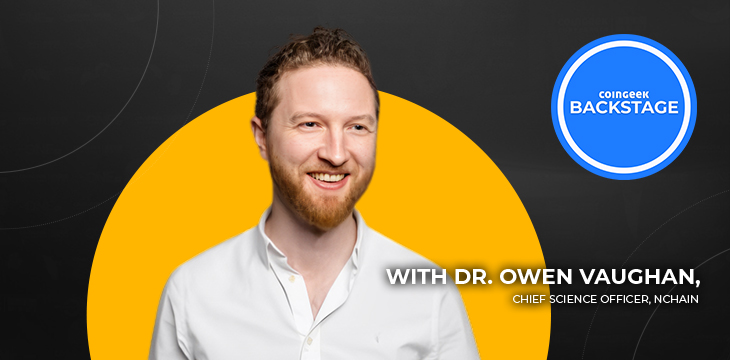|
Getting your Trinity Audio player ready...
|
Imagine a digital asset you can send from one blockchain to another and how much easier it could be to transfer value worldwide. We’re not talking about bridging or wrapping techniques, which are well-known and clunky, but a single asset that can be sent between users on their preferred chain, no matter what it is. nChain’s Dr. Owen Vaughan invented a protocol to do just that, sharing details about the “Universal Blockchain Assets” (UBA) with CoinGeek Backstage on the sidelines of the London Blockchain Conference 2024.
To learn more about the technical details of how UBA works, watch the full video below.
UBAs could prove to be bigger news than the invention of Ordinals or ERC-20 tokens, both of which created frenzies of new activity in the blockchain asset world.
The UBA protocol creates a new medium of transfer called a “packet,” Vaughan said, deliberately avoiding the word “transaction.” It works on the premise that all blockchains have a few features in common, namely immutable databases and double-spend protections. A packet, in effect, is a code that authorizes the transfer of ownership. It logs details of its previous owners with “inputs and outputs in its inputs,” appearing on the destination blockchain not as a “bridged” or representative token but as a real asset with native unspent outputs.
‘Wrapped’ or ‘bridged’ tokens, and why they’re a poor solution
Vaughan says he drew from personal experience in creating the UBA protocol. Recently married, he and his wife visited her native country of Argentina, where he experienced first-hand some everyday impacts of that country’s financial struggles.
In March, inflation in Argentina was 11%. It was 300% over the last 12 months. The situation has led to currency controls, making it incredibly difficult to send money there from other countries; even banks and money transfer companies consider it too risky.
Simple cross-border value transfer is one of Bitcoin and blockchain‘s earliest promises, so Vaughan instinctively turned to this solution. Unfortunately, while attempting to use Coinbase (NASDAQ: COIN) to acquire the USDC stablecoin, he instead bought an asset called USDbC, a “bridged” or “wrapped” version of USDC that exists on the Base network. While one USDbC technically represents one USDC, the two tokens exist on different blockchains and aren’t interchangeable.
“Why does USDbC exist? Who does this serve? It’s a really terrible user experience,” he said.
Vaughan said a company should be able to issue a United States dollar-backed token that’s useable on any blockchain. Having a universal asset would let more people use blockchain and digital assets with far less risk and much lower costs.
Finding the blockchain that works best by using the same asset on each one
The UBA protocol is quite simple, Vaughan noted. It doesn’t require third parties and a “bridge” to move between blockchains. This alone makes it superior to any other cross-chain solution available today.
However, this simplicity masks a lot of very complex thinking, he added, and it might take some time for his on-stage announcement at the London Blockchain Conference 2024 to sink in. People might actually need to use UBAs for a while before the advantages become clear.
Fees on different blockchains are a big part of this. Even popular ERC-20 stablecoins like USDC or Tether can be difficult or expensive to use due to the high “gas” fees required to move an asset. Presented with this same problem, a UBA holder could just transfer the token to a cheaper blockchain and use it for small casual payments.
This presents another potential downstream effect: by transferring the same token across different blockchains, users will quickly discover which blockchains are cheaper and more efficient. As Vaughan said, blockchains will have to “compete for the business of these tokens.” Their users aren’t locked into using a single chain just because their token of choice lives there.
As nChain‘s Director of Research, Vaughan prefers the BSV blockchain as the most efficient option, winning on high transaction volumes, low fees, and data/scripting capabilities.
“But now we’ll see that play out,” he said.
Watch: Blockchain is much more than digital assets

 12-25-2025
12-25-2025 




